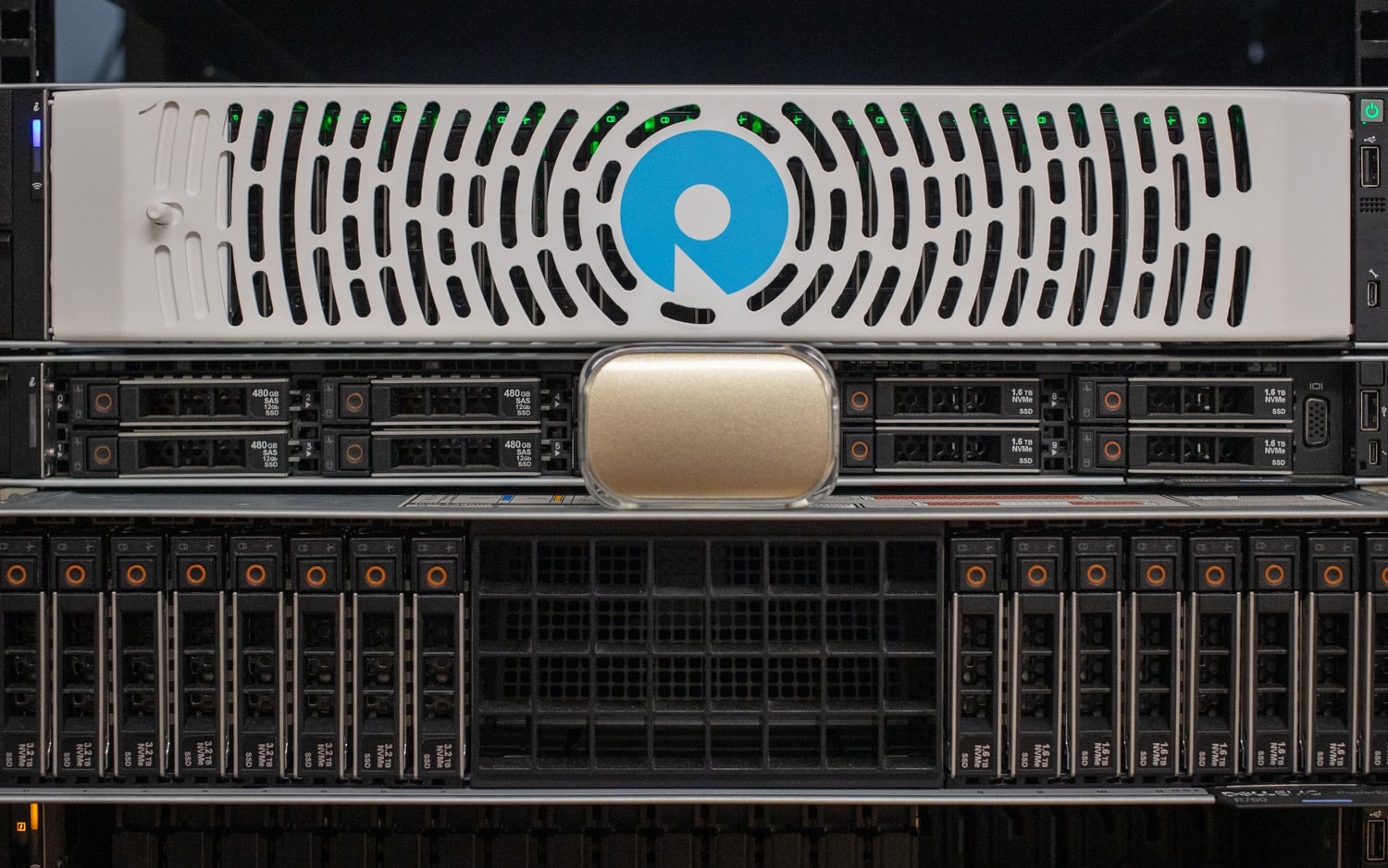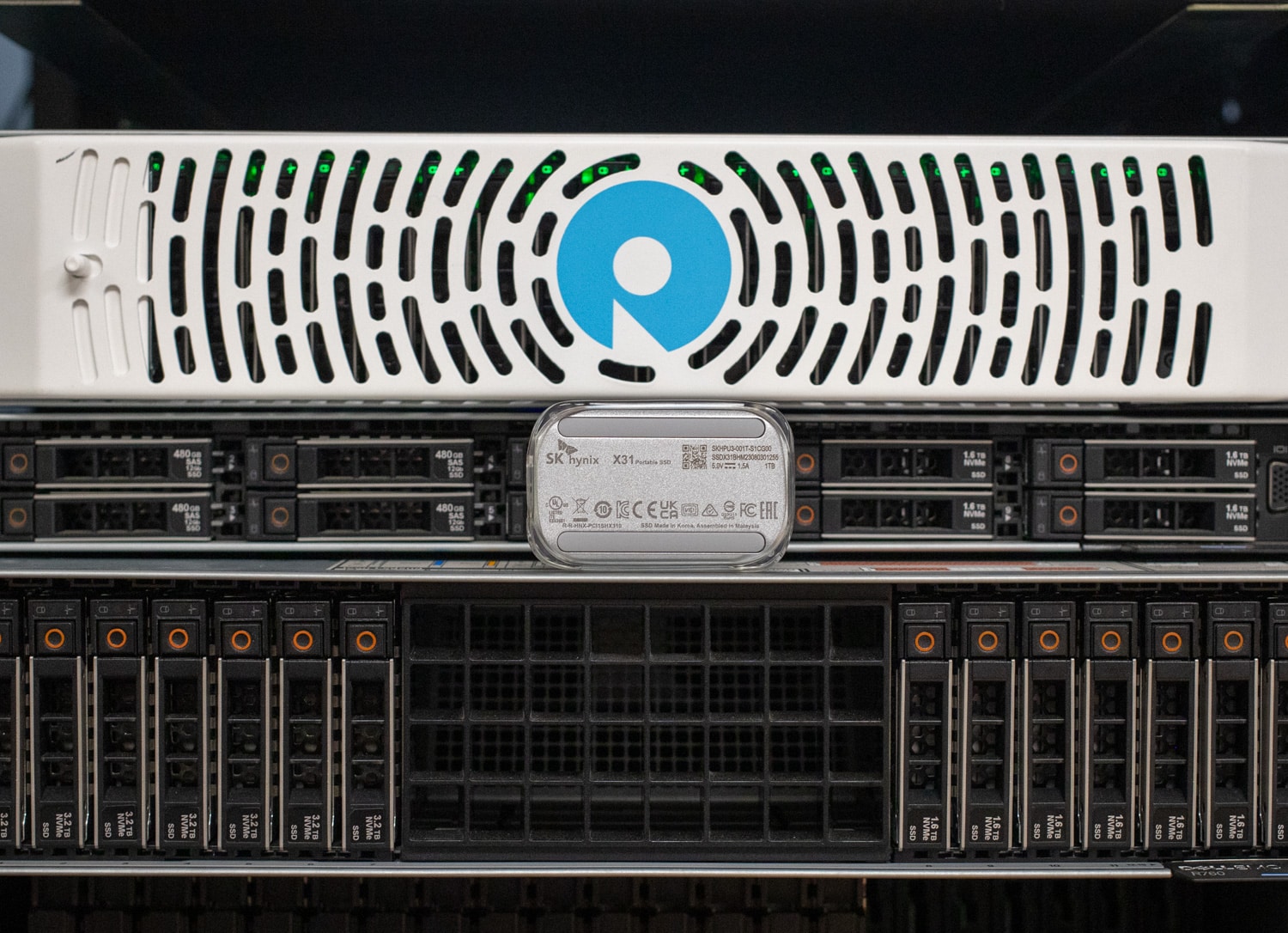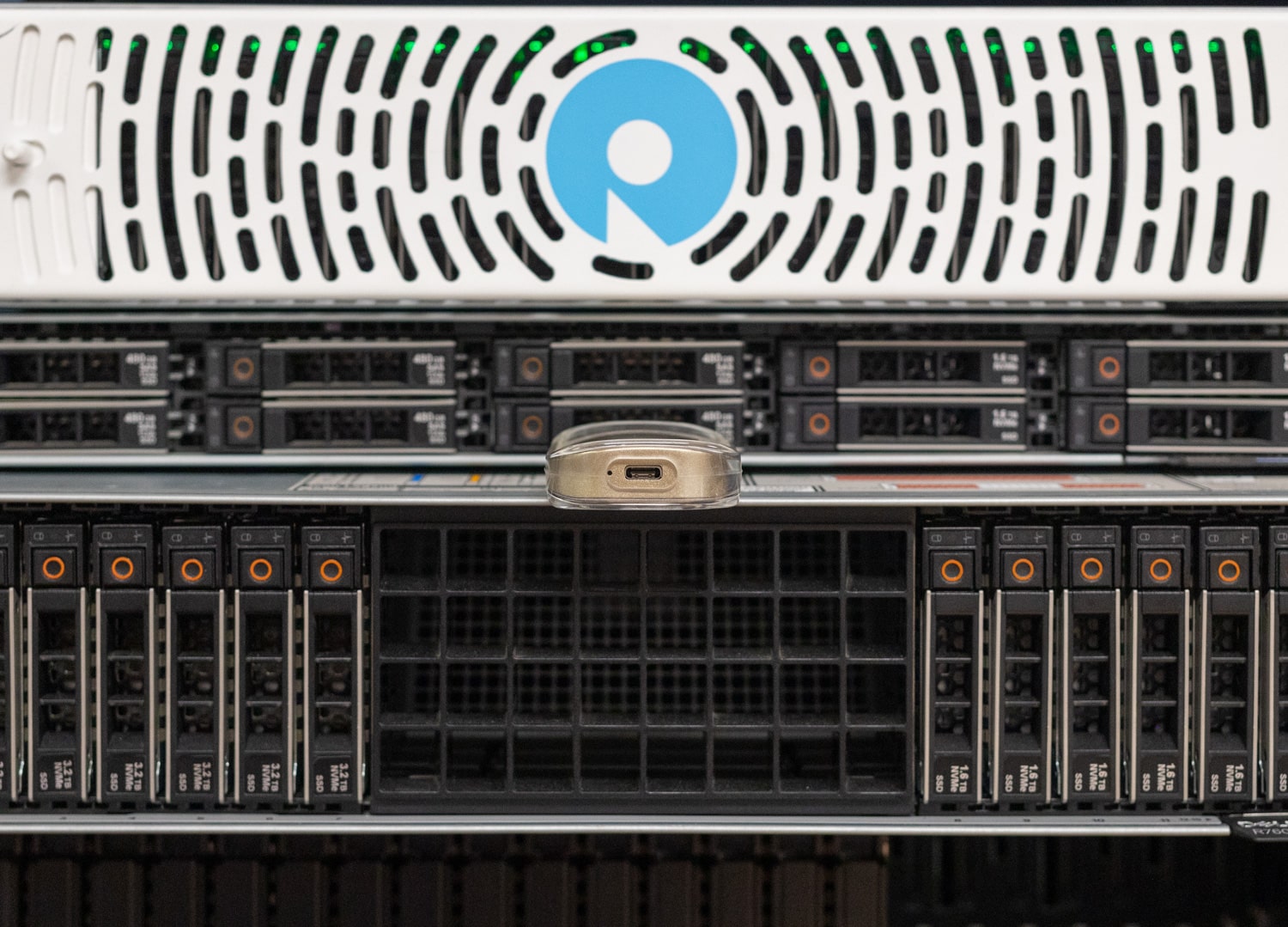The SK Hynix Tube T31 portable SSD pairs a 2242 M.2 NVMe SSD with USB type A interface to deliver surprising performance.
SK Hynix has a good footing in the storage game, both enterprise and consumer. You usually hear about SK Hynix for NAND chips and internal storage, but they recently took a step into the external storage area with the Tube T31 and Beetle X31 drives. The Beetle X31 has been around for a few months now, but we just got our hands on it and the Tube T31 to take a look at.

SK Hynix Tube T31 and X31 Specifications
One thing that stuck out to us is that these two drives while having quite a different design and footprint, have pretty similar specs otherwise. The reason for that is pretty interesting and will be highlighted later.
| Tube T31 | Beetle X31 | |
|---|---|---|
| Model Name | SKHSU3-512G-R1GB00 (512GB) SKHSU3-001T-R1GB00 (1TB) |
SKHPU3-512G(512GB) SKHPU3-001T(1TB) |
| USB Interface | USB 3.2 Gen2 (10Gbps) | USB 3.2 Gen2 (10Gbps) |
| Connector | Male USB Type A | Female USB Type C |
| Capacity | 512GB 1TB |
512GB 1TB |
| Sequential Read | Up to 1,000MB/s | Up to 1,050MB/s |
| Sequential Write | Up to 1,000MB/s | Up to 1,000MB/s |
| Dimensions | 92.5mm x 30.5mm x 14mm | 74mm x 46mm, 14.8mm |
| Weight | ~35g | 53g |
| Durability | Rated for Drop up to 2m | Drop up to 2m |
We don’t know the price of the T31 Tube at this time (in the US), but we predict it will lie close to the X31 Beetle which is currently $69.99 for the 512GB model and $89.99 for the 1TB model. This pricing falls in the middle of other 3.2 Gen2x1 drives as well.
SK Hynix Tube T31 and X31 Build and Design
The T31 Tube has a pretty straightforward appearance, with a rounded matte black shell. It comes closer to the appearance of a normal USB stick than an external SSD, with just a larger footprint than most USB sticks. One odd choice on this drive though, is most USB sticks have a lanyard or keyring loop and the T31 doesn’t have any attachment point.
The shell on the T31 is a pretty sturdy-feeling plastic, with a cover that clips over the type A connector. The type A is a bit surprising, though in the context of the X31 also being available, the port does make it easy to use the T31 across older systems and modern desktops. It’s just a bit dicey if your usage is on thin and light laptops – in that event the X31 would be the better choice. One benefit of the type A though is the rigidity it offers. This is a pretty husky drive thanks to the M.2 SSD inside, so the design should be durable over time.
The form factor of the X31 Beetle follows a little closer to some other portable SSDs with a slightly rectangular footprint. The X31 Beetle sits a little bit larger than the T31, boasting an aluminum housing instead of the plastic housing of the T31, and has rubber feet on the bottom. The X31 takes a two-tone Gold and Silver look with a gold top case and silver on the bottom case.
The bottom shows the X31’s Silver bottom case and the rubber feet to stop it from sliding around. We also received a silicone bumper for the X31 that can be seen around the perimeter of the drive, though with the bumper, the feet no longer touch surfaces making it slide around a little more.
Connectivity-wise, the X31 Beetle has a single Type C port on the end and a status light. This drive also does not feature any sort of attachment points for a keyring or lanyard, but that is a feature seen less on portables.
SK Hynix Tube T31 and X31 Internal Construction
An aspect we usually don’t get into on portable drives is their internal construction. We stumbled across some images of these drives cracked open and showing M.2 2242 drives on a custom PCB instead of a special board with the NAND attached like most other drives.
We cracked open the T31 Tube, and as we mentioned above, this is just an M.2 2242 SSD on a special PCB to go over USB. We weren’t brave enough to crack open the X31 Bettle to take a peek, but Crystal Disk Info confirmed our thoughts, The M.2 Inside both drives has the same model number.
One thing we saw inside this drive, was a really good thermal solution. On the back of the M.2, we saw a thermal pad as well as metal heat shields on the front and rear of the PCB to dissipate heat. The heatshields aren’t coupled to the housing in any way, but there didn’t seem to be any issues. These drives also properly reported temperature inside Crystal Disk Info.
Performance
For these two drives, we are testing the 1TB models of each. The X31 was tested on our Lenovo ThinkStation P520, while the T31 had to be tested on our AMD ThreadRipper Pro consumer platform. This system leverages the ASUS Pro WS TRX50-SAGE WIFI motherboard, which turned out to be the only system in our lab with a 10Gb USB-A port. All other systems are generally equipped with a 5Gb USB-A port. USB-C is most commonly found with 10Gb and 20Gb support.
We will be comparing the T31 and X31 against two other USB 3.2 Gen2x1 drives, which are the Crucial X9 Pro, and the Samsung T7 Shield. These drives will all run our normal portable storage tests like the Blackmagic Disk Speed Test alongside IOMeter 1 Thread and 4 Thread tests.
Blackmagic Disk Speed Test
First up is the Blackmagic Disk Speed Test. This test is single-threaded so it won’t show all of the potential of the drives but it gives us a good reference point of how similar these drives perform. The Beetle only pulled ahead of the T31 by 16MB/s on write and 36MB/s on Read. The X9 and T7 Shield both stayed pretty close to the SK Hynix drives too.

Blackmagic Disk Speed Test T31 (left) and X31 (Right)
| Disk Speed Test | Tube T31 (1TB) | Beetle X31 (1TB) | Crucial X9 Pro (2TB) | Samsung T7 Shield (2TB) |
|---|---|---|---|---|
| Write | 949.0MB/s | 965.4MB/s | 901.7MB/s | 936.5MB/s |
| Read | 925.4MB/s | 961.8MB/s | 957.9MB/s | 893.8MB/s |
IOMeter 1 Thread
The next tests are the IOMeter tests. Like the Blackmagic test, this next test is also one thread. The 2MB read and writes bring numbers that follow a similar pattern to the Blackmagic test with the T31 pulling ahead, but with a little bit more of a lead this time. Both of the SK Hynix drives also perform a fair bit better than the X9 and T7 Shield.
| IOMeter (1 Thread) |
Tube T31 (1TB) | Beetle X31 (1TB) | Crucial X9 Pro (2TB) | Samsung T7 Shield (2TB) |
|---|---|---|---|---|
| Seq 2MB Write | 982.08MB/s | 877.04MB/s | 803.3MB/s | 804.4MB/s |
| Seq 2MB Read | 1,005.19MB/s | 944.26MB/s | 873.5MB/s | 765.6MB/s |
| Random 2MB Write | 983.00MB/s | 877.77MB/s | 729.1MB/s | 805.2MB/s |
| Random 2MB Read |
937.35MB/s | 892.78MB/s | 876.38MB/s | 757.81MB/s |
| Random 4K Write | 14,018 IOPS | 15,599 IOPS | 18,102 IOPS | 13,610 IOPS |
| Random 4K Read | 11,1543 IOPS | 9,068 IOPS | 4,507 IOPS | 3,791 IOPS |
IOMeter 4 Thread
With all of the drives, we see better numbers on the 4 Thread tests with the extra 2 threads bringing out more of the drive’s potential. Here we also see the T31 and X31 performing better than the X9 and T7 Shield with the biggest gaps on the random 2MB write and both of the random 4k tests.
| IOMeter (4 Thread) |
Tube T31 (1TB) | Beetle X31 (1TB) | Crucial X9 Pro (2TB) | Samsung T7 Shield (2TB) |
|---|---|---|---|---|
| Seq 2MB Write | 1,086.35MB/s | 1,092.64MB/s | 975.5MB/s | 1,017.6MB/s |
| Seq 2MB Read | 1,089.62MB/s | 1,092.84MB/s | 1,039.2MB/s | 1,041.5MB/s |
| Random 2MB Write | 1,086.09MB/s | 1,092.06MB/s | 871.2MB/s | 999.88MB/s |
| Random 2MB Read | 1,087.70MB/s | 1,091.05MB/s | 1,039.2MB/s | 1,019MB/s |
| Random 4K Write | 44,672 IOPS | 65,475 IOPS | 65,700 IOPS | 17,909 IOPS |
| Random 4K Read | 39,263 IOPS | 41,697 IOPS | 15,278 IOPS | 15,347 IOPS |
Conclusion
Overall, both of these drives perform similarly and follow the normal performance of USB 3.2 Gen2 drives. In almost all of the tests, the SK Hynix Tube T31 and X31 drives pull ahead of the Crucial X9 and Samsung T7, with the X31 beetle still pulling the lead on most tests.
The X31 Beetle is a nice overall portable SSD that’s like many others in the market. It does offer a good performance profile though and it’s priced in line with the market, overall we like it as a mainstream portable that will do well for most people.
The T31 Tube is an entirely different animal. We’re torn on the USB A port but completely understand why SK hynix made the decision. If you have a system with a 10Gb type A port, you’re going to have the fastest thumb drive around. The T31 also has a very nice thermal design, we’re glad we took the leap and cracked it open to see that.
With the two SSDs performing similarly, the choice between them comes down to form factor and connectivity. We’re glad to see SK hynix bringing its engineering to the portable SSD space, which can always use more high-quality options.
Engage with StorageReview
Newsletter | YouTube | Podcast iTunes/Spotify | Instagram | Twitter | TikTok | RSS Feed







